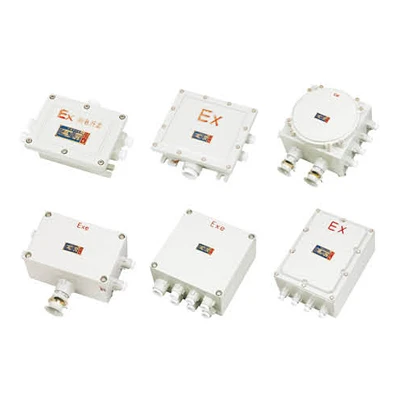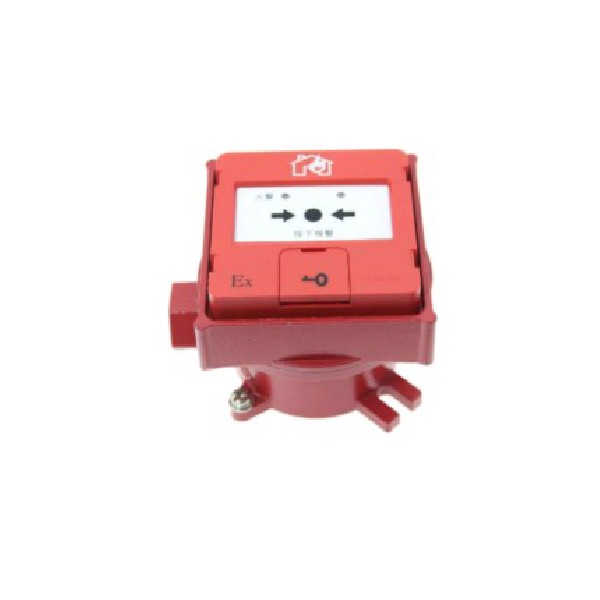Introduction

When it comes to working with electrical equipment in potentially hazardous environments, understanding the concept of a classified electrical hazardous zone is crucial. This classification helps identify and manage the risks associated with the presence of flammable gases, vapors, or combustible dust. By properly classifying these zones, companies can ensure the safety of their workers and prevent potential accidents.
Understanding Classified Electrical Hazardous Zones
A classified electrical hazardous zone refers to an area where the presence of flammable substances poses a risk of explosion if ignited by an electrical spark or heat. These zones are categorized based on the likelihood of such substances being present and help determine the level of precautions needed to mitigate the risks.
The Importance of Hazardous Area Classification
The classification of hazardous areas is essential for creating a safe working environment in industries such as oil and gas, chemical processing, pharmaceuticals, and more. By accurately identifying and marking these zones, companies can implement appropriate safety measures and equipment to prevent accidents and protect personnel.
Exploring ATEX Classified Zones
ATEX classified zones refer to areas that are regulated by European directives for controlling explosive atmospheres. These directives set out requirements for equipment and protective systems intended for use in potentially explosive atmospheres, ensuring a high level of safety throughout Europe.
The Basics of Class/Division Hazardous Locations
In North America, hazardous locations are classified using a system known as Class/Division classification. This system categorizes areas according to their likelihood of containing flammable gases or vapors, as well as combustible dusts or fibers.
Ensuring Safety in Class 1 Division 1 Electrical Requirements
Class 1 Division 1 refers to locations where ignitable concentrations of flammable gases or vapors exist under normal operating conditions or where ignitable concentrations can exist frequently due to repair or maintenance operations. Meeting electrical requirements in these environments is crucial for preventing catastrophic incidents.
What is a Classified Electrical Hazardous Zone?

Defining Hazardous Area Classification
When we talk about a classified electrical hazardous zone, we are referring to an area where the presence of flammable gases, vapors, or combustible dusts could pose a risk of fire or explosion. This classification is crucial for ensuring the safety of personnel and equipment in industrial environments.
In these hazardous zones, the potential for fire or explosion is a real concern, making it essential to accurately classify the area based on the type and quantity of hazardous materials present. This classification allows for the implementation of appropriate safety measures and controls to minimize the risk to personnel and equipment. Without proper classification, there is a heightened danger of accidents and catastrophic events occurring in industrial settings.
Identifying Different Types of Hazardous Zones
Hazardous areas are categorized into different zones based on the likelihood and duration of the presence of explosive atmospheres. These zones range from Zone 0 (where explosive atmospheres are present continuously) to Zone 2 (where they are only present intermittently).
Understanding the Risks in Classified Electrical Hazardous Zones
The risks in classified electrical hazardous zones are significant and can lead to catastrophic consequences if not properly managed. These risks include potential fires, explosions, and harm to personnel and equipment. Understanding these risks is essential for implementing effective safety measures.
The potential for fires and explosions in classified electrical hazardous zones is a serious concern that requires careful attention and proactive measures. In these zones, the presence of flammable gases, vapors, or dust can create an environment where the slightest spark or heat source can lead to a catastrophic event. Understanding the specific properties of these substances and their potential for ignition is crucial for developing effective safety protocols to mitigate these risks.
A Closer Look at ATEX Classified Zones

The Significance of ATEX Certification
When it comes to ensuring safety in classified electrical hazardous zones, the significance of ATEX certification cannot be overstated. ATEX certification is a mandatory requirement for equipment used in potentially explosive atmospheres, ensuring that products meet the necessary safety standards and regulations. This certification provides assurance that the equipment has been designed and tested to be safe for use in hazardous areas.
Furthermore, ATEX certification helps to mitigate the risk of explosions and fires in hazardous areas by ensuring that equipment is designed to prevent the ignition of flammable substances. This is crucial for industries such as oil and gas, chemical processing, and mining, where the presence of potentially explosive atmospheres poses a significant safety concern. By adhering to ATEX standards, companies can demonstrate their commitment to protecting the well-being of workers and minimizing the likelihood of catastrophic incidents.
Compliance with ATEX Standards in Hazardous Areas
Compliance with ATEX standards is essential for companies operating in hazardous areas, as it ensures that they are adhering to the strict safety requirements set forth by regulatory bodies. By following these standards, businesses can minimize the risk of accidents and protect both their employees and assets from potential harm. It also demonstrates a commitment to upholding the highest levels of safety and quality within the industry.
By adhering to ATEX standards, companies can also enhance their reputation and credibility within the industry. This can lead to increased trust from customers, partners, and regulatory agencies, ultimately contributing to a stronger and more sustainable business. Moreover, compliance with these standards can open up new opportunities for expansion into international markets, as many countries have similar regulations in place. By investing in ATEX compliance, companies can position themselves as leaders in safety and quality, setting them apart from competitors.
Safety Measures for ATEX Classified Zones
In order to maintain safety in ATEX classified zones, it's crucial to implement appropriate safety measures such as using certified equipment, providing adequate training for workers, and conducting regular inspections and maintenance checks. These measures are essential for preventing accidents and mitigating potential risks associated with operating in hazardous environments.
In addition to using certified equipment and providing adequate training for workers, it's also important to establish clear communication protocols and emergency procedures in ATEX classified zones. This ensures that all employees are aware of the potential hazards and know how to respond in case of an emergency. By promoting a culture of safety and preparedness, the risk of accidents can be further reduced, creating a safer working environment for everyone involved.
Class 1 Division 1 Electrical Requirements

Meeting the Standards for Class 1 Electrical Area Classification
In order to meet the standards for Class 1 electrical area classification, it is crucial to understand the specific requirements for different hazardous zones. This includes identifying and classifying areas where flammable gases or vapors may be present, and implementing appropriate safety measures to prevent ignition sources.
Implementing Safety Protocols in Division 1 Electrical Environments
When it comes to Division 1 electrical environments, it is essential to implement strict safety protocols to minimize the risk of explosions or fires. This involves using equipment and systems that are specifically designed and approved for use in hazardous locations, as well as ensuring that all electrical installations comply with relevant regulations and standards.
Ensuring Compliance with Electrical Hazardous Zone Regulations
Ensuring compliance with electrical hazardous zone regulations is a top priority for businesses operating in potentially explosive atmospheres. This involves staying up-to-date with the latest industry standards, conducting regular inspections and maintenance of electrical equipment, and providing comprehensive training for employees working in classified hazardous areas.
Ex-Proof Manufacturing Expertise

Jinrong has amassed 27 years of unparalleled experience in ex-proof manufacturing, specializing in products for classified electrical hazardous zones. Their extensive knowledge and expertise have positioned them as leaders in the industry, ensuring top-notch quality and safety compliance for all their offerings.
Jinrong's 27 Years of Experience in Ex-Proof Manufacturing
With a wide range of products in the ex-proof industry, Jinrong is able to cater to the diverse needs of different hazardous areas. From explosion-proof lighting and electrical fittings to control panels and enclosures, their extensive product line showcases their expertise and versatility in manufacturing ex-proof equipment. This allows them to provide comprehensive solutions for various industries such as oil and gas, chemical processing, pharmaceuticals, and more.
Wide Range of Products in the Ex-Proof Industry
Jinrong offers a diverse array of products designed specifically for use in classified electrical hazardous zones, including explosion-proof lighting fixtures, junction boxes, and control panels. Each item is meticulously crafted to ensure maximum safety and reliability, catering to a wide range of industrial applications.
Furthermore, Jinrong's products are certified to meet the highest industry standards, providing customers with peace of mind and assurance of quality. With state-of-the-art manufacturing capabilities, Jinrong is able to customize products to meet specific requirements, ensuring that each solution is tailored to the unique needs of every client. This commitment to excellence sets Jinrong apart as a leader in the ex-proof industry, delivering innovative and reliable solutions for hazardous environments.
Providing Quality Certification and Manufacturing Capabilities
Jinrong's commitment to excellence extends to their rigorous quality certification processes and state-of-the-art manufacturing capabilities. Their facilities are equipped with cutting-edge technology and adhere to strict industry standards, guaranteeing the production of reliable ex-proof equipment for any classified electrical hazardous zone. In addition, Jinrong invests in ongoing research and development to ensure that their products are at the forefront of technological advancements, providing customers with innovative solutions for their hazardous area requirements. Furthermore, their team of experienced engineers and technicians undergo regular training to stay updated on the latest industry trends and best practices, enabling them to consistently deliver high-quality products that meet or exceed customer expectations.
Conclusion

In conclusion, it is crucial to prioritize safety in classified electrical hazardous zones. Understanding the classification of hazardous areas and ensuring compliance with ATEX and Class/Division standards are essential for maintaining a secure working environment. Partnering with Jinrong for ex-proof solutions guarantees top-notch expertise and quality products.
Ensuring Safety in Hazardous Area Classification
Understanding the risks and requirements of classified electrical hazardous zones is paramount in ensuring the safety of workers and equipment. By implementing proper safety measures and compliance protocols, companies can effectively mitigate potential hazards in these environments.
ATEX and Class/Division Compliance for Hazardous Zones
Compliance with ATEX certification standards and Class/Division requirements is vital for maintaining the integrity of hazardous zones. Adhering to these regulations ensures that electrical equipment used in these areas is designed to minimize the risk of ignition sources, thereby reducing the likelihood of accidents.
By partnering with Jinrong for Ex-Proof solutions, companies can ensure that their electrical equipment meets the stringent requirements of ATEX and Class/Division compliance. Jinrong's expertise in designing and manufacturing explosion-proof products guarantees that the risk of ignition sources is minimized, providing a safer working environment in hazardous zones. With Jinrong as a trusted partner, businesses can have peace of mind knowing that their equipment is fully compliant with industry regulations.
Partnering with Jinrong for Ex-Proof Solutions
Jinrong's 27 years of experience in ex-proof manufacturing, extensive product range, and commitment to providing quality certification make them a trusted partner for businesses operating in classified electrical hazardous zones. Their expertise ensures that companies have access to reliable solutions tailored to their specific needs.
Jinrong's commitment to staying ahead of industry trends and advancements ensures that their ex-proof solutions are always cutting-edge and compliant with the latest regulations. By partnering with Jinrong, businesses can benefit from access to state-of-the-art technology that maximizes safety and efficiency in hazardous environments. This forward-thinking approach sets Jinrong apart as a leader in the field, providing peace of mind for companies seeking reliable ex-proof solutions.

